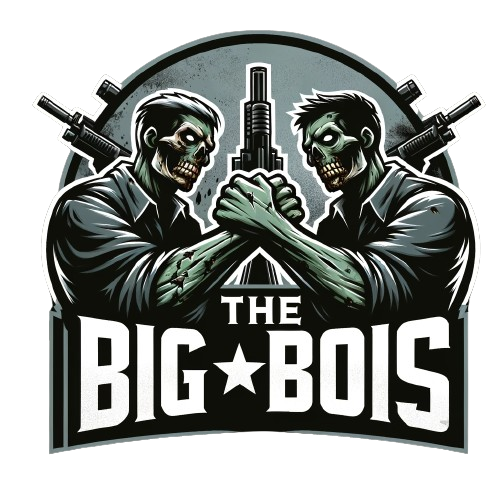In Feed the Deep, players are plunged into an atmospheric, Lovecraftian roguelike that delivers an immersive, high-stakes underwater adventure. Created by Luke Muscat—the mastermind behind Jetpack Joyride and Fruit Ninja—Feed the Deep combines eerie undersea exploration with procedural generation and strategic resource management. With a haunting soundtrack by Cedar Jones and an array of dark, shifting environments, the game does more than challenge players; it pulls them into an unforgettable journey that balances tension, thrill, and exploration.
Exploring the Depths: Game Mechanics and Worldbuilding
Feed the Deep stands out with its clever use of “greedy” mechanics, making every decision about what to collect a meaningful risk. Players dive into randomly generated underwater caves to gather gold, upgrade equipment, and conquer an ancient, lurking presence. The further you venture, the more you’ll realize that Feed the Deep is more than just a roguelike; it’s a psychological test of endurance where players are constantly forced to balance ambition with survival.
Every level introduces a unique environment populated by hostile creatures and unexpected obstacles, testing both reflexes and strategic planning. Collecting resources slows down your movement, reduces visibility, and heightens vulnerability. Hauling a large number of items feels cumbersome—an intentional choice that keeps the gameplay tense. Successfully navigating the caves often involves creative techniques like adjusting your load or sprinting to avoid tight squeezes and navigate small openings, adding a layer of skill development for savvy divers.

Progression and Replayability: A Balanced Pace
One of Feed the Deep’s most appealing aspects is its pacing. With only six main levels, it’s possible to complete the campaign in five hours. However, each level is varied, introducing new mechanics that keep gameplay fresh. This isn’t a roguelike where progression feels repetitive; instead, it consistently surprises players with clever puzzles and environmental changes. Although there are only a handful of levels, each can be replayed with in-game challenges that offer additional layers of strategy, exploration, and intrigue.
While the levels are randomly generated, this does not make the game a traditional roguelike. Instead of starting over with each death, Feed the Deep has players explore contained, distinct levels that change slightly with each dive. Although this structure sacrifices some roguelike unpredictability, it helps build a cohesive narrative and fosters player confidence in overcoming challenges.
For those who enjoy complex puzzles, Feed the Deep is filled with secrets and cleverly designed challenges that require keen observation. Using tools like lights, signs, and ropes can dramatically impact survival, making these resources as vital as they are limited. Many of the puzzles feel like games within games, providing satisfying “a-ha” moments that reward careful attention to detail.

Suspenseful Atmosphere and Soundtrack
One of the game’s greatest strengths is its haunting, tension-filled atmosphere. The dark, labyrinthine caves coupled with an award-winning soundtrack by Cedar Jones create an immersive horror experience. Each dive feels laden with suspense, as players push deeper into the unknown, never quite sure what creatures or obstacles they might encounter. The Lovecraftian themes are palpable; there’s a constant feeling that something malevolent is lurking just out of sight.
Sound design plays a crucial role in establishing this ominous tone. The ambient noises—rumbles, distant echoes, and haunting melodies—perfectly capture the isolation and dread of exploring an alien undersea world. This atmosphere is enough to keep players on edge throughout each level, as they’re forced to balance resource collection with the need to retreat to safety.
Control Mechanics: Rewarding But Occasionally Frustrating
The gameplay mechanics in Feed the Deep focus on simple but effective controls that demand careful management. However, players may find themselves fatigued by the constant need to hold down keys to move in a specific direction. An alternative control option, such as tapping to start movement and braking with another button, could make navigation less physically demanding while preserving the challenge.
Despite this minor frustration, the controls remain tight, and each move requires precision. Developing a fluid technique for navigating tight spaces and maneuvering around obstacles is both rewarding and necessary for progression. Successfully mastering these controls can make the difference between survival and disaster in the game’s trickiest environments.
World Depth and Narrative
The lore of Feed the Deep enhances its mysterious and foreboding atmosphere. The backstory of floating cities and the ominous discovery below adds a layer of intrigue that makes every dive feel purposeful. Rather than focusing heavily on text-based narrative, the game tells its story through the environment. Each piece of debris, cave structure, and shadowy creature hints at a world long forgotten, giving players a sense of being on the edge of an ancient and insidious discovery.
Players can expect each level to provide hints at this backstory without overwhelming them with exposition. This light touch with lore, combined with the game’s exploration-driven storytelling, reinforces the feeling of isolation and curiosity as you navigate its depths.

Strengths: Atmosphere and Strategic Exploration
- Masterfully Crafted Atmosphere: From the visuals to the soundscape, Feed the Deep is visually stunning and sonically haunting. The music and ambient sounds transform each dive into a suspense-filled journey.
- Intriguing Mechanics: The “greedy” system of resource collection forces players to make difficult choices. Carrying too much may hinder progress, demanding strategy and calculated risks.
- Skill-Building Gameplay: Navigation becomes easier as you practice techniques like sprinting and timing turns to avoid obstacles, giving the gameplay an enjoyable learning curve.
- Inventive Puzzles and Secrets: Each level introduces new challenges that are fresh and surprising, making the relatively short campaign feel packed with variety.
Drawbacks: Longevity and Control Fatigue
- Limited Replayability: With only six main levels, Feed the Deep is on the shorter side. While in-game challenges extend the experience, the lack of expansive replayable content could leave players wanting more.
- Control Fatigue: Requiring constant key-holding for movement may feel tiresome over extended play sessions. A more ergonomic control option could improve the experience.
- Traditional Roguelike Elements: While procedurally generated, Feed the Deep doesn’t fully embody traditional roguelike mechanics, which may disappoint some genre purists.
Feed the Deep: Feed the Deep is an atmospheric, strategically engaging roguelike that offers a captivating balance of exploration, resource management, and suspense. While its short campaign and control scheme may be sticking points, the game’s rich world, varied mechanics, and immersive soundtrack more than make up for these issues. It’s a must-play for fans of horror-inspired roguelikes or anyone looking to dive deep into a world shrouded in mystery. With Luke Muscat’s unique blend of tension and discovery, Feed the Deep provides a refreshing twist on the genre—one that lingers long after the final dive. – Obsidian


